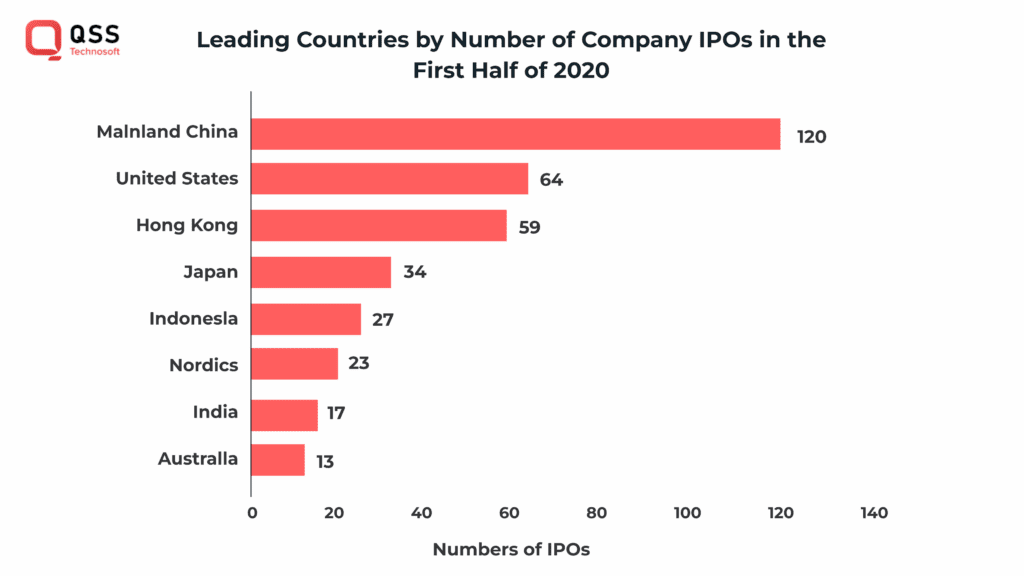The financial realm is continually evolving, with Initial Public Offerings (IPOs) standing as pivotal moments for companies seeking capital infusion. In this dynamic environment, the demand for sophisticated IPO marketing analysis tools has surged, prompting the need for a comprehensive app software solution.
This blog serves as a guide to building an IPO Marketing Analysis Company Software, exploring key features, development considerations, industry analysis, and the profound impact such a tool can have on financial decision-making.
Understanding the Significance of IPO Marketing Analysis
Before delving into the intricacies of building an IPO Marketing Analysis Company Software, it is crucial to grasp the significance of robust analysis in the IPO landscape. IPOs represent a critical juncture for companies, symbolising their transition from private to public entities. Investors, financial analysts, and the companies themselves rely on accurate and insightful data to navigate the complexities of the IPO process.
Industry Analysis
Understanding the landscape of the financial industry and the specific needs of stakeholders is paramount in developing an effective IPO Marketing Analysis Company Software.
-Market Volatility: The financial markets are known for their inherent volatility, and IPOs are no exception. A comprehensive software solution should incorporate tools to analyse and predict market trends, enabling users to make informed decisions in the face of market fluctuations.
-Regulatory Compliance: The financial industry is heavily regulated, and IPOs are subject to stringent regulatory requirements. The software should incorporate features that ensure compliance with regulations, providing a secure and transparent platform for users.
-Competitor Analysis: Companies planning an IPO need to understand their competitive landscape. A robust software solution should offer tools for analysing competitors’ financial health, market positioning, and previous IPO performances, aiding in the formulation of effective marketing strategies.
Key Features of IPO Marketing Analysis Company Software:
-Data Aggregation and Integration: The software should be capable of aggregating data from diverse sources, including financial statements, market trends, and regulatory filings. Integration with external databases and APIs is essential for real-time data updates.
-Predictive Analytics: Employing machine learning algorithms and predictive analytics can provide users with insights into potential market trends, allowing for proactive decision-making.
-Regulatory Compliance Tools: To streamline the IPO process, the software should include features that facilitate compliance with regulatory requirements, ensuring accuracy and transparency in financial reporting.
-User-Friendly Interface: A user-friendly interface is crucial for widespread adoption. The software should present complex data in an accessible and comprehensible manner, catering to a broad user base, including financial analysts, investors, and executives.
-Security Measures: Given the sensitivity of financial data, robust security measures, including encryption, multi-factor authentication, and secure data storage, are paramount to instil confidence in users.
Building the Software:
Market Research and Analysis
Begin by conducting comprehensive market research to identify gaps and opportunities in the current landscape. Understand the specific needs and pain points of financial analysts, investment bankers, and other stakeholders involved in the IPO process. Analyse existing software solutions to identify their strengths and weaknesses.

Regulatory Compliance
Given the highly regulated nature of financial markets, staying abreast of regulatory requirements is paramount. Ensure that the software complies with relevant financial regulations and data protection laws. This may involve partnering with legal experts to navigate the complex regulatory landscape.
Key Features and Functionalities
Once a solid understanding of the market and regulatory environment is established, the next step is to outline the key features and functionalities of the IPO Marketing Analysis Company Software.
Data Aggregation and Analysis
Implement robust data aggregation mechanisms to collect relevant financial data, market trends, and competitor information. Utilise machine learning algorithms and data analytics tools to provide meaningful insights and predictions. Real-time data updates are crucial for accurate analysis.
Financial Modelling and Valuation Tools
Incorporate tools for financial modelling and valuation, allowing users to assess the financial health of companies planning to go public. This could include features for discounted cash flow (DCF) analysis, comparable company analysis (CCA), and other valuation methodologies.
Also Read Our Page : angularjs app development services
Market Sentiment Analysis
Integrate natural language processing (NLP) algorithms to analyse news articles, social media, and other sources for market sentiment. Understanding public perception can provide valuable insights into potential IPO success.
Customizable Dashboards and Reports
Design user-friendly dashboards that can be customised based on user preferences. The software should generate comprehensive reports, offering a snapshot of the IPO landscape, market trends, and competitor activities.
Collaboration and Communication Tools
Facilitate seamless collaboration among users by integrating communication tools within the software. Features such as real-time chat, comments, and document sharing can enhance teamwork and decision-making processes.
Security Measures
Prioritise data security by implementing robust encryption, access controls, and regular security audits. Given the sensitivity of financial data, instilling trust in users is crucial for the success of the software.
Development Process
With a clear understanding of the market, regulatory requirements, and key features, the development process can commence. Here is a step-by-step guide to building an IPO Marketing Analysis Company Software:
Define the Scope and Objectives
Clearly define the scope of the software and set specific objectives. Identify the target audience and tailor features to meet their needs. Establish a roadmap for development, considering both short-term and long-term goals.
Marketing and Adoption Strategies
Once the software is developed, the next critical phase involves marketing and promoting the IPO Marketing Analysis Company Software. A well-executed marketing strategy is essential to generate awareness, attract users, and establish a strong market presence.
Targeted Marketing Campaigns:
- Identify the key demographics of potential users, including financial analysts, investment bankers, and institutional investors.
- Launch targeted marketing campaigns through digital channels, industry publications, and participation in relevant conferences and events.
- Highlight the unique features and benefits of the software, emphasising its ability to streamline IPO analysis and enhance decision-making processes.
Content Marketing:
- Develop a content marketing strategy to showcase thought leadership in the field of IPO analysis. This can include blog posts, whitepapers, and case studies that demonstrate the software’s effectiveness.
- Collaborate with industry influencers and experts to create content that adds credibility and reaches a wider audience.
Free Trials and Demos:
- Offer free trials or demo versions of the software to allow potential users to experience its capabilities firsthand.
- Provide training sessions or webinars to guide users through the software‘s functionalities and showcase its value in real-world scenarios.
Client Testimonials and Case Studies:
- Gather testimonials from early users or beta testers who have experienced positive outcomes using the software.
- Develop comprehensive case studies illustrating successful IPO analyses conducted with the assistance of the software.
Strategic Partnerships:
- Explore partnerships with financial institutions, investment firms, and educational institutions. Collaborative efforts can lead to increased credibility and access to a broader user base.
- Consider offering co-branded solutions or integrations with existing financial software used by potential clients.
User Engagement and Support:
- Establish a robust customer support system to address user queries and concerns promptly.
- Encourage user engagement through forums, community discussions, and feedback channels. Actively incorporate user suggestions for continuous improvement.
Scalability and Adaptability:
- Design the software with scalability in mind to accommodate a growing user base. Regularly update the software to adapt to changes in market dynamics and user requirements.
- Communicate the software’s ability to evolve alongside emerging trends in the financial and technological landscapes.
The Significance of Technological Advancements
In the era of digital transformation, technological advancements play a pivotal role in shaping the effectiveness of financial tools. The integration of artificial intelligence (AI), machine learning (ML), and data analytics enhances the capabilities of IPO Marketing Analysis Company Software.
AI-powered algorithms can analyse vast datasets and identify patterns that may elude traditional analysis methods. ML models can learn from historical IPO data to make accurate predictions about future market movements. Additionally, data analytics tools provide actionable insights, empowering financial analysts to make informed decisions.
Moreover, the application of blockchain technology can enhance the security and transparency of financial transactions associated with IPOs. Smart contracts, built on blockchain, can automate and streamline various processes, reducing the risk of errors and fraud.
Also Read Our Page : iphone app design company
Conclusion
In conclusion, the development of IPO Marketing Analysis Company Software represents a strategic move in the realm of financial technology. The increasing complexity of the IPO market necessitates sophisticated tools that can empower companies to navigate the process with confidence. By incorporating advanced analytics, user-centric design, and adaptability to industry trends, developers can create a software solution that not only meets current needs but also positions itself as an asset in the ever-evolving world of finance.
As the global IPO landscape continues to evolve, the role of technology in facilitating successful IPOs becomes more pronounced. Companies that embrace innovative software solutions for IPO marketing analysis are better positioned to capitalise on market opportunities, mitigate risks, and make well-informed decisions in the pursuit of financial success.
What sets QSS Technosoft Inc apart as the best choice for building IPO Marketing Analysis Company Software?
When it comes to developing custom software solutions, QSS Technosoft Inc stands apart from the rest. Our deep expertise in the finance and technology industries allows us to create leading-edge, cutting-edge projects that match our clients’ needs. That’s why we’re the perfect partner for enterprises that need software designed specifically for their IPO marketing campaign.
We have an impressive track record of success when it comes to developing software solutions. Our passionate team of expert developers bring the latest and greatest technologies and methodologies to all our projects, resulting in highly dependable and user-friendly software programs.
Our knowledge of the finance industry is second to none. Our professionals have years of experience working with IPOs, and that expertise gives us a better understanding of the kinds of analysis methods needed for successful campaigns. With these distinctive strengths, QSS Technosoft Inc promises to deliver high quality, innovative products for your IPO marketing challenges.
Frequently Asked Questions (FAQs)
Q1: Why is IPO marketing analysis crucial for companies going public?
A1: IPO marketing analysis is critical for companies going public as it involves the evaluation of market trends, investor sentiments, and competitor activities. Understanding these factors is essential for formulating effective marketing strategies, ensuring a successful transition from private to public ownership.
Q2: How can the software integrate real-time data for accurate analysis?
A2: The software should have seamless integration capabilities with diverse data sources, including financial statements, market trends, and social media sentiments. By aggregating real-time data, the software provides analysts with an up-to-date and comprehensive view of the market.
Q3: What role does predictive modelling play in IPO marketing analysis software?
A3: Predictive modelling utilises advanced analytics to forecast IPO performance and market reactions. By identifying patterns and correlations in historical data, the software helps analysts make informed predictions about potential market movements and investor behaviour.
Q4: How does the software address regulatory compliance in the ever-changing regulatory landscape?
A4: The software should have built-in tools to ensure compliance with regulatory requirements and reporting standards. Additionally, it should provide alerts and notifications to keep users informed about any changes in regulatory landscapes that might impact IPO strategies.
Q5: What are the key features for competitor analysis in IPO marketing analysis software?
A5: Competitor analysis features should include in-depth evaluations of competitors’ financial health, market positioning, and historical performance. Comparative tools should be integrated to assess the strengths and weaknesses of the company going public against industry peers.
Q6: How can the software adapt to changes in regulatory frameworks?
A6: The software should be designed to allow for quick adaptation to changes in regulatory frameworks. Regular updates and monitoring of global regulatory developments are essential to ensure that the software remains compliant with evolving standards.
Q7: How does the software analyse investor sentiments?
A7: The software integrates with sentiment analysis tools to gauge investor perceptions and sentiments. Real-time monitoring of social media platforms, news articles, and other relevant sources helps capture market sentiments accurately.
Q8: How can the software contribute to risk management in the IPO process?
A8: The software should include robust risk assessment tools to identify and mitigate potential risks associated with the IPO. Additionally, scenario analysis capabilities can help users prepare for various market conditions and unexpected events.
We are proud to mention that our work has been recognized by leading B2B reviews and research platforms like GoodFirms, Clutch, MirrorView, and many more.




Ultimate guide to creating powerful IPO marketing analysis software